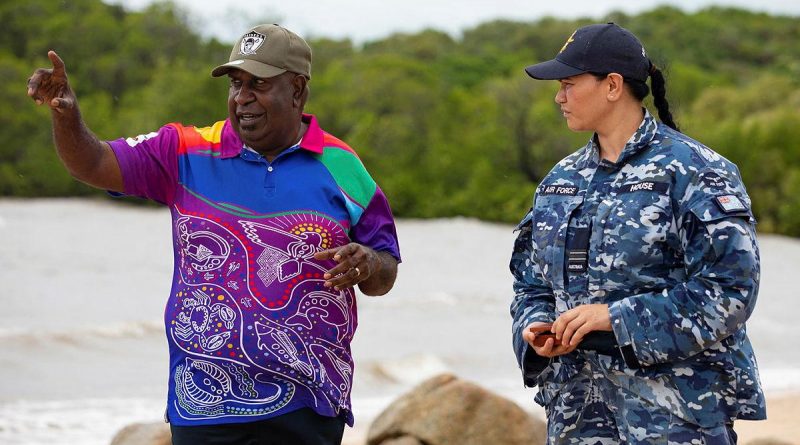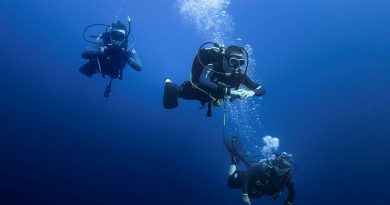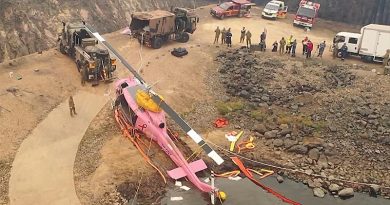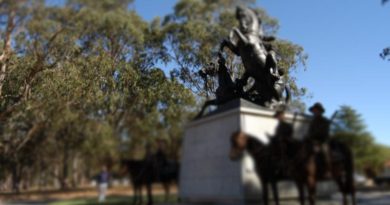RAAF collecting samples from significant lands
Share the post "RAAF collecting samples from significant lands"

In the lead up to the Centenary of Air Force, Aboriginal and Torres Strait Islander communities, in partnership with Air Force personnel, are gathering samples from places of significance around the country.
CAPTION: Indigenous Liaison Officer Flight Lieutenant Kristal House engages with Deputy Chair of the Kauareg Native Title Elizah Wasaga on the King’s Point beach at Ngurupai (Horn Island) in the Torres Strait. Photo by Corporal Jesse Kane.
These samples of shells, soil and sand will form an integral part of the Welcome Ceremony for Air Force’s Centenary birthday week, as an acknowledgement of Air Force’s footprint being on traditional land around Australia.
Over the course of its history, Air Force has forged enduring links in times of war and peace with towns and districts across regional Australia.
Elizah Wasaga, a descendent of the Kuarareg tribe, gathered shells from Kings Point on Horn Island (Ngurupai) to symbolise the strong partnership between the Torres Strait Islander people and Air Force.
“Kings Point is a special place for Torres Strait Islander people,” Mr Wasaga said.
“The Kuarareg people occupied this area but they also travelled around to other islands. Today our people still come here to hunt and gather.
“Shells were chosen to represent our country as they are particularly significant to our region.
“Generally, we place shells on graves when we have burials because we are erecting a place for our loved ones to rest. Shells were also used as a form of commodity and were traded in this region.
“These shells signify the connection between us, the land and the sea. They also represent the role the Torres Strait Islands played during World War II and the contribution Aboriginal and Torres Strait Islander people made to the defence of Australia.”
The Torres Strait Islands were used as a forward operating base by Air Force during World War II providing anti-aircraft coverage and a stationing point for No. 32 Squadron until 1942.
Horn Island was the second most attacked Australian location after Darwin during World War II with the airfield heavily bombed on eight occasions during 1942-1943.
More than 5000 men and women served on Horn Island, including 830 men from the Torres Strait Light Infantry Battalion.
No. 35 Squadron’s C-27J Spartans, based at RAAF Base Amberley, still use the airfield on Horn Island today and continue the enduring link between Air Force and the Torres Strait Island community.
.
.

.
.
Share the post "RAAF collecting samples from significant lands"





